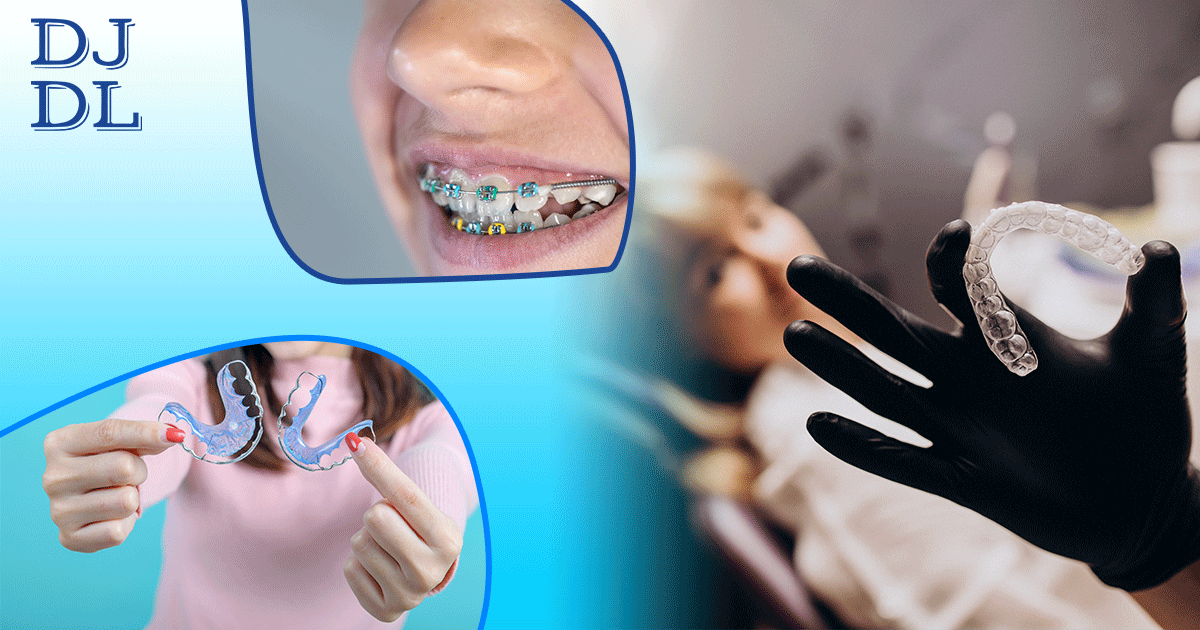
How do ortho retainers work
Ortho retainers are devices used to maintain the position of teeth after orthodontic treatment, such as braces or clear aligners. Once the primary orthodontic appliances are removed, the teeth have a natural tendency to shift back to their original positions. Ortho retainers prevent relapse by keeping teeth in their original positions, ensuring the durable results of orthodontic treatment through long-term stability. There are different types of retainers, including removable and fixed retainers, and they work with ortho retainers.
Removable Retainers: Removable retainers work by providing constant, gentle pressure to hold the teeth in their corrected positions. Patients are typically instructed to wear them full-time initially and then gradually transition to wearing them only at night. Common types of removable retainers include:
- Hawley Retainers: These consist of a combination of acrylic and metal wires. The acrylic part sits on the roof of the mouth or along the tongue side of the lower teeth, while the metal wires wrap around the front teeth. The wires can be adjusted to maintain proper tooth alignment.
- Clear Retainers: These are made of clear plastic and are custom-fit to the shape of your teeth. Clear retainers are less noticeable than Hawley retainers but may not be as durable.
- Essix Retainers: Similar to clear retainers, Essix retainers are also made of clear plastic. They fit snugly over the entire arch of teeth and are less visible than Hawley retainers.
- Vivera Retainers: After completing clear aligner treatment, Invisalign provides these clear, removable retainers. They are custom-made for each patient’s teeth.
How do removable retainers work?
- Material: Removable retainers are typically made of plastic or a combination of plastic and metal.
- Usage: The wearer can effortlessly remove them to carry out their regular oral hygiene routine, which includes brushing and flossing. They are placed over the teeth.
- Function: Removable retainers work by providing stability to the teeth in their new positions. They help prevent the natural tendency of teeth to shift over time.
- Duration of Wear: Initially, removable retainers are often worn full-time (24 hours a day) and then gradually transitioned to nighttime wear only.
Fixed Retainers: They work by providing a constant, low-level force to keep the teeth in place. Fixed retainers are effective but can be more challenging to clean compared to removable retainers. Common types of fixed retainers include
- Bonded Lingual Retainers: These are thin wires that are bonded to the back (lingual) side of the teeth. They are usually placed on the lower front teeth. The wires are not visible from the front and are designed to be a long-term solution.
How fixed retainers work
- Material: Fixed retainers consist of a thin wire that is bonded to the back of the teeth.
- Installation: These retainers are typically placed on the lingual (tongue-side) surface of the teeth and are secured in place with dental cement.
- Function: The wire exerts a continuous, gentle force on the teeth to prevent them from moving. Fixed retainers are effective because they are always in place.
- Duration of Wear: Fixed retainers are often recommended for an extended period, sometimes years, depending on the individual’s orthodontic needs.
Tips for integrating retainer wear into daily routines.
Integrating retainer wear into daily routines can be crucial for maintaining the results of orthodontic treatment. Here are some tips to help make wearing retainers after braces a seamless part of your daily life:
- Establish a routine: Set specific times for wearing your retainers. Initially, you may be advised to wear them full-time (day and night), and later, your orthodontist may recommend wearing them only at night. Create a routine by incorporating retainer wear into daily habits, such as after brushing your teeth or before going to bed.
- Use reminders: Set alarms or reminders on your phone to prompt you to wear your retainers at the designated times. Create a visual cue, such as placing your retainer case next to your toothbrush or on your bedside table.
- Keep them visible: Store your retainer case in a visible and easily accessible location. This serves as a reminder to put them on or take them out. Avoid keeping your retainers in a case tucked away where you might forget to use them.
- Clean regularly: Build cleaning your retainers into your oral hygiene routine. Regularly clean them using a soft toothbrush, mild soap, or a recommended cleaning solution. Keep a spare toothbrush and toothpaste at work or in your bag for cleaning your retainers on the go.
- Stay hydrated: Consider wearing your retainers while drinking water. This minimizes the chances of accidentally leaving them behind when you take a break to eat or drink. Be cautious about wearing retainers while consuming colored or sugary beverages to prevent staining or damage.
- Maintain regular check-ups: Schedule regular follow-up appointments with your orthodontist. This helps ensure that your retainers are working effectively and allows for any necessary adjustments. Use these appointments as an opportunity to discuss any challenges or concerns you may have with wearing your retainers.
- Be patient: It may take some time to adjust to wearing retainers consistently. Be patient with yourself as you integrate this new habit into your daily life. If you experience discomfort or issues with your retainers, communicate with your orthodontist promptly.

